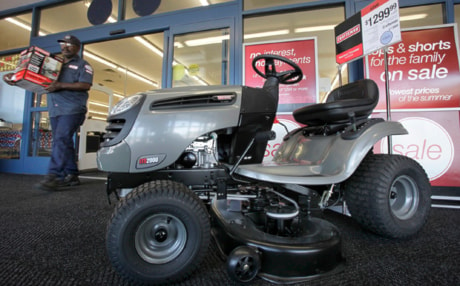WASHINGTON — Orders to U.S. factories for manufactured goods from computers to aircraft surged in May for a second straight month. And a gauge of business investment rose last month by the most in nearly five years. Together, the data Wednesday signal that the recession could be at or near a bottom.
Yet new-home sales fell unexpectedly last month. It was a reminder that any recovery in the housing market will be long and slow.
Even so, investors focused on the positive news on durable-good orders and business investment, before Federal Reserve policy-makers announce their decision on interest rates Wednesday afternoon. The Dow Jones industrial average added about 80 points in midmorning trading. Broader stock averages also surged more than 1 per cent.
The Commerce Department said demand for durable goods rose 1.8 per cent last month, far better than the 0.6 per cent decline that economists expected. It matched the rise in April, with both months posting the best performance since December 2007, when the recession began.
Orders for non-defence capital goods, a proxy for business investment plans, jumped 4.8 per cent, the biggest increase since September 2004. That could signal that businesses have stopped trimming their investment spending.
The back-to-back monthly gains in orders for durable goods — items expected to last at least three years — were further evidence that a dismal stretch for U.S. manufacturers may be nearing an end. But analysts say any sustained rebound is months away.
“This is a pretty good report and welcome news in the hard-pressed (capital expenditure) sector,” Cary Leahey, an economist at New York-based consulting firm Decision Economics, wrote in a research note.
Still, new new-home sales dropped 0.6 per cent in May to a seasonally adjusted annual rate of 342,000, from a downwardly revised April rate of 344,000. Economists had expected a sales pace of 360,000 last month, according to Thomson Reuters. Sales were down nearly 33 per cent from May last year.
The median sales price, $221,600, was down 3.4 per cent from a year earlier but up 4.2 per cent from April.
American companies have been forced to trim millions of workers as they struggle with the longest U.S. recession since the Second World War. U.S. businesses also have suffered from a sharp drop in exports as many overseas markets struggle with their own downturns.
Excluding transportation, orders for durable goods posted a 1.1 per cent rise in May, also better than the 0.4 per cent drop that had been expected. Demand for transportation products rose 3.6 per cent. That reflected a 68.1 per cent jump in orders for commercial aircraft, a volatile category that had fallen 1.4 per cent the previous month.
The big increase in aircraft offset further weakness in the troubled auto sector. Demand for motor vehicles and parts fell 8.1 per cent in May, signalling disruptions from the bankruptcy filings at Chrysler LLC and General Motors Corp. (NYSE:GM)
Orders for machinery rose 7.7 per cent last month. Demand for computers and related products surged 9.4 per cent.
The overall economy, as measured by the gross domestic product, shrank at annual rates of 6.3 per cent in the final three months of last year and 5.7 per cent in the January-March quarter — the worst six-month stretch for the GDP in more than 50 years. The government is scheduled to revise the first-quarter GDP figure Thursday, but analysts expect the revision will leave the overall figure unchanged.
U.S. economists at Deutsche Bank cautioned that “if the rest of the economy turns out to be weak, new orders for durables could ultimately be cancelled.”
Many economists say that GDP in the current quarter will show a much smaller decline, around two per cent, with growth returning in the second half of this year. “The U.S. economy is weak but no longer in free fall,” Leahey said.
Most economists do not think the unemployment rate will turn around quickly. The jobless rate jumped to a 25-year high of 9.4 per cent in May, and many economists say it could top 10 per cent before the recovery gains enough strength to push unemployment lower.
